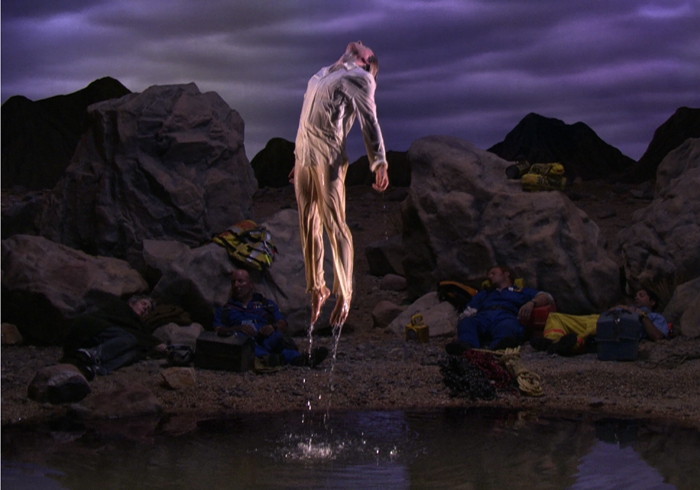
Bill Viola, the American artist known for his multimedia work reflecting on the big themes of birth, death and belief, has died.
Emerging out of the American new video scene of the late 1970s, an early work, Tape I, featured the artist’s reflection caught in moving image. The meditation of the self and body would be an enduring theme. It wasn’t until an artist-in-residency at the Sony Corporation in Japan, in 1980, which he used as a chance to study Zen Buddhism, and shortly after his return to the US, the death of his mother, that Viola’s work came to prominence. The Passing (1991) features the last moments of his mother’s life, on tubes in a hospital bed, interweaved with footage of Viola as a child and the desert landscapes of the Southwest. His mother’s death would feature again in the Nantes Triptych, made in 1988 after the birth of his sons, which took the form of ‘the standard propositional form of the altar piece’, Viola said, marking the increasing influence of European sacred art on his practice. The left screen captured the mess and delight of a birth; the right, his mother; and in the centre a fully clothed man floating in a black void.
‘These are the great universal experiences,’ Viola explained. ‘They happen to be the most private experiences and the camera is the embodiment of the invasion of privacy, which is where the tension comes in.’
Viola’s work became increasingly grandiose. The room-sized The Crossing featured a two-sided screen which captures the same man walking out the darkness. On one side, however, flames from the ground start to slowly engulf him, while on the second a deluge of water cascades down. His epic five-part installation Going Forth by Day (2002) meditated on the idea of rebirth; while in Fire Birth (2002) a human form emerges from a submerged world and The Path (Going Forth by the Day) (2002) features a stream of people process through a forest.
His symbolism and theatricality leant itself to collaboration, which ranged stage projections for the rock group Nine Inch Nails in 2000, to a new production of Richard Wagner’s Tristan und Isolde, directed by Peter Sellars in 2004.
‘We have to reclaim time itself, wrenching it from the “time is money” maximum efficiency, and make room for it to flow the other way – towards us,’ Viola said of his work. ‘We must take time back into ourselves to let our consciousness breathe and our cluttered minds be still and silent. This is what art can do and what museums can be in today’s world.’